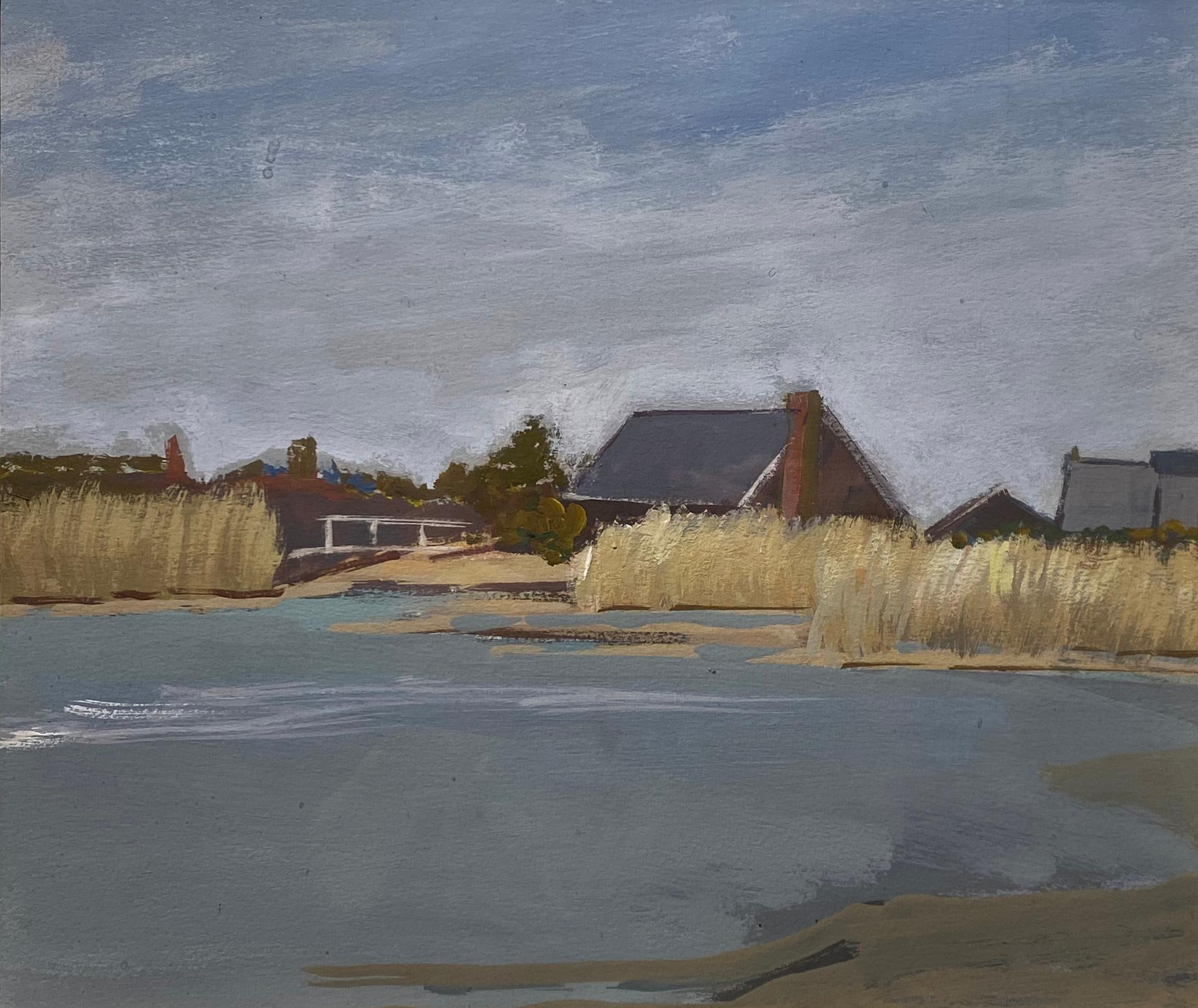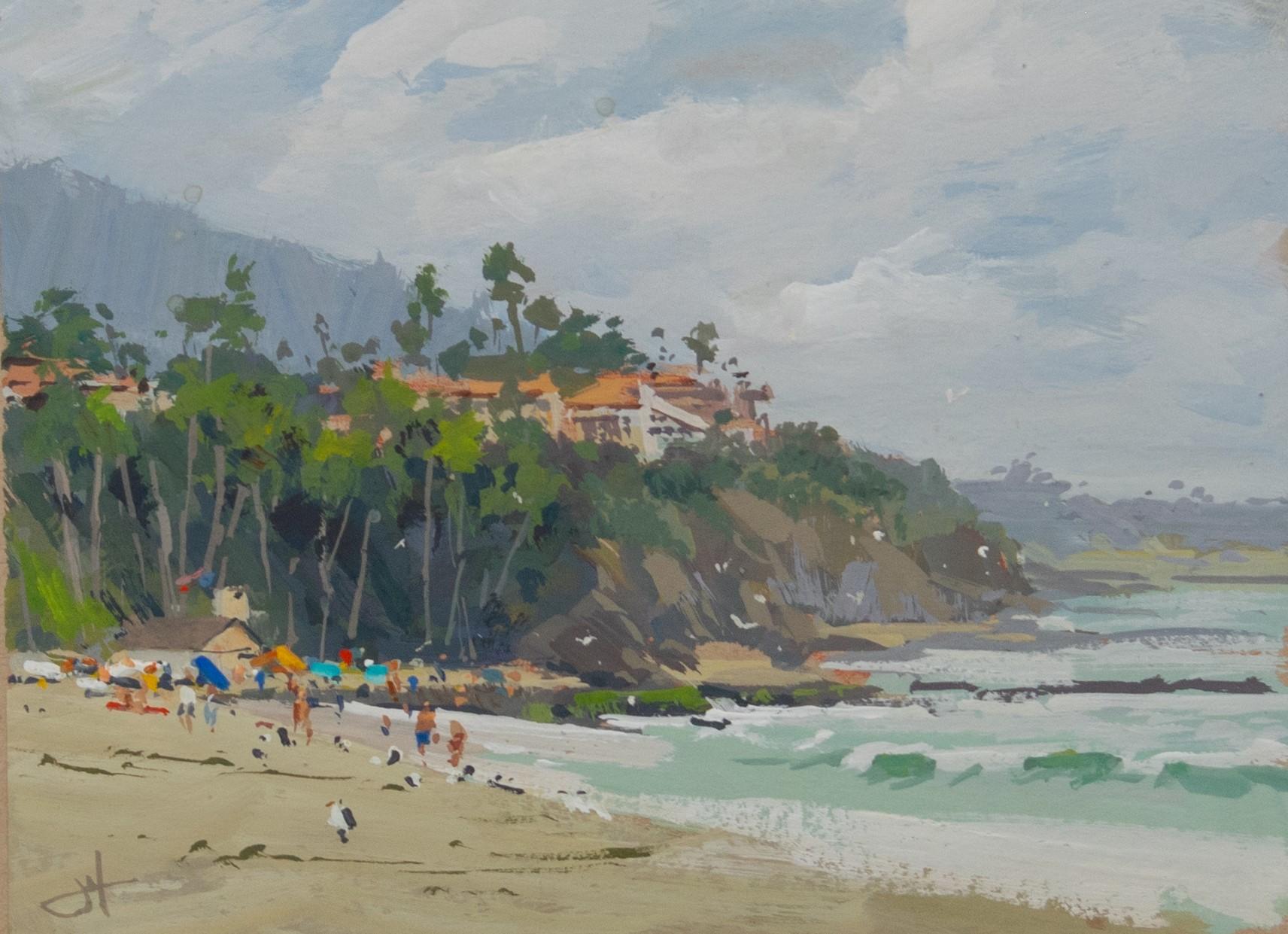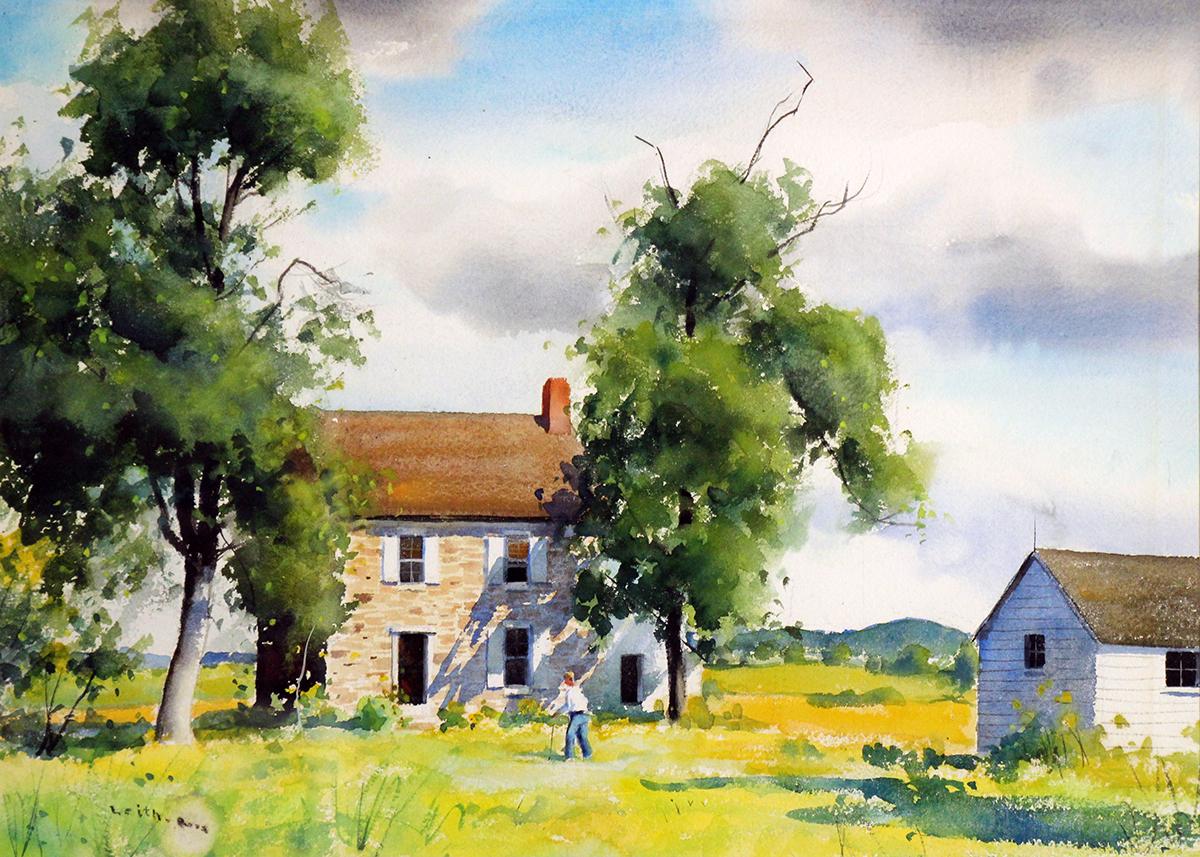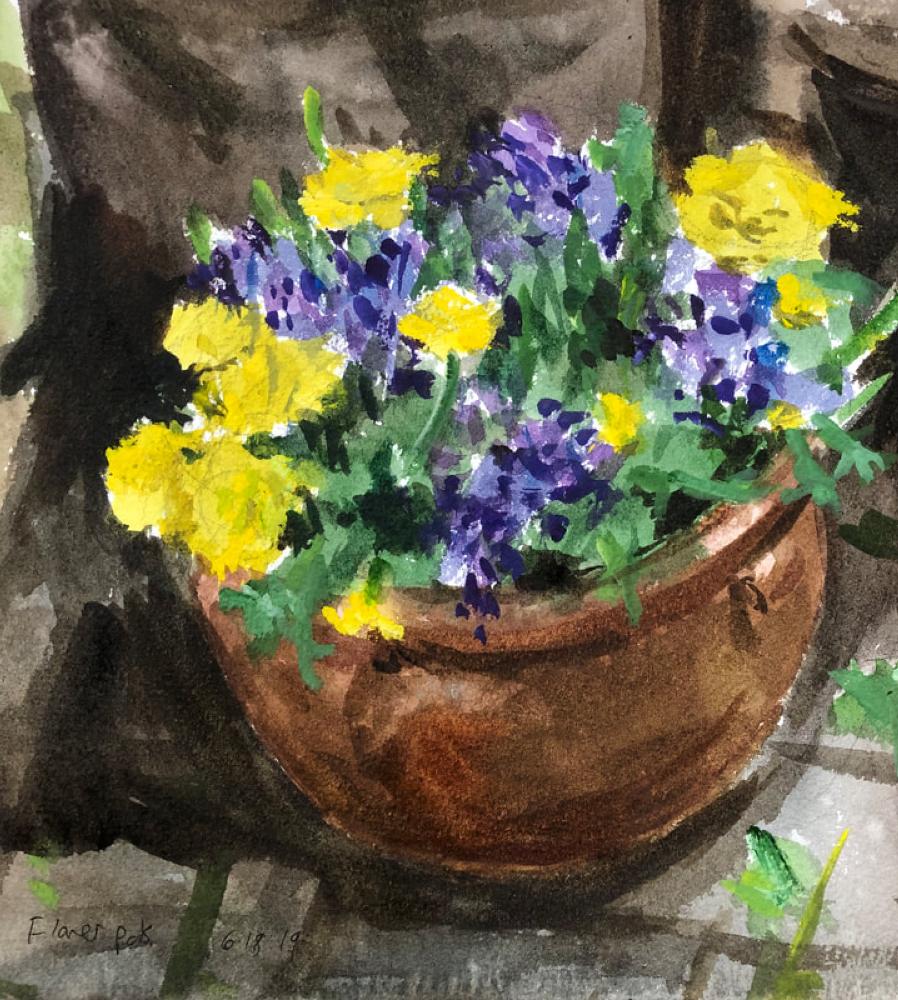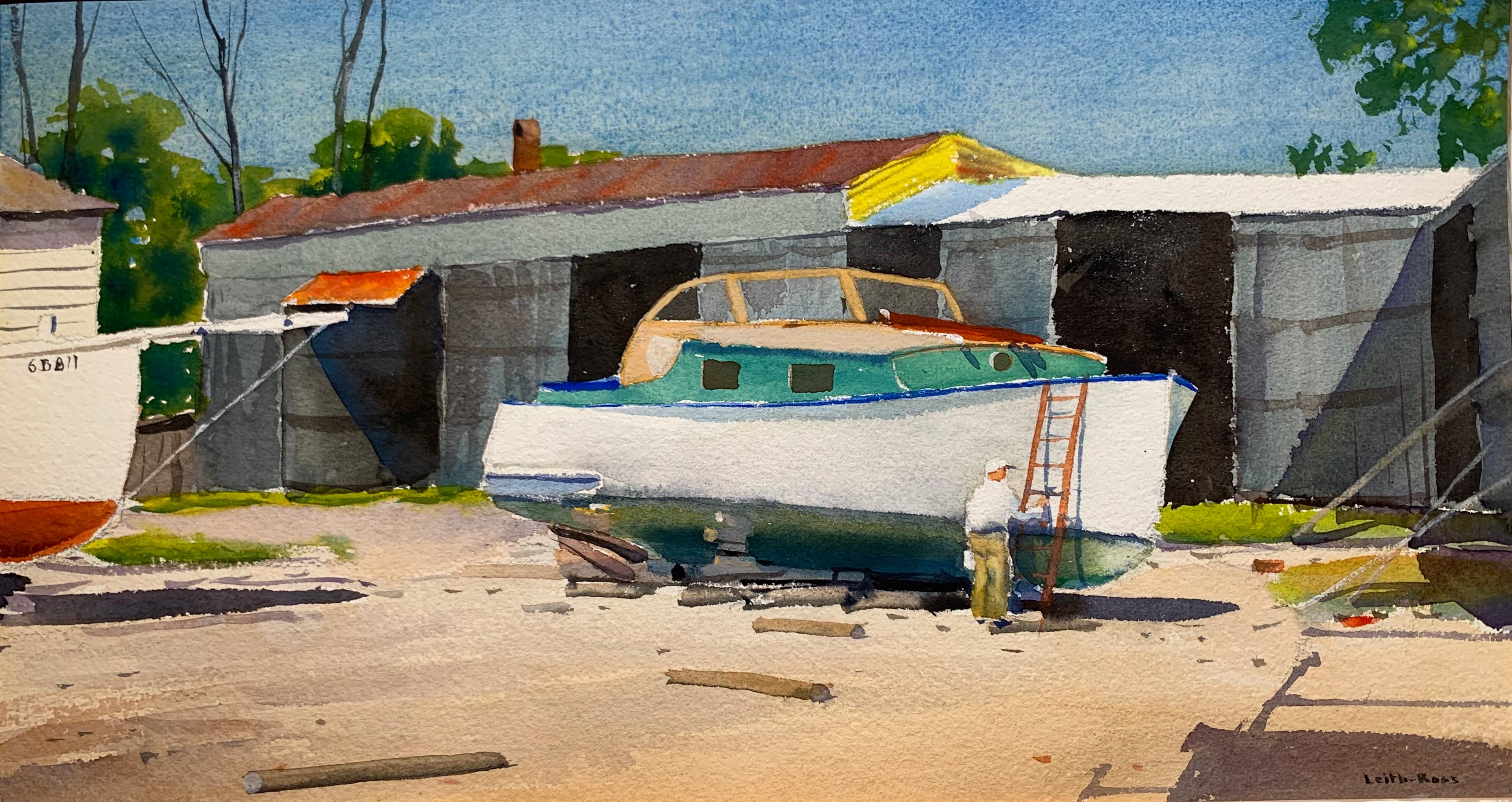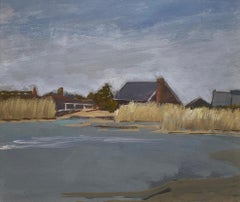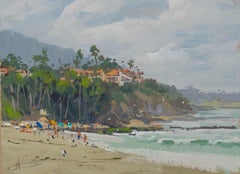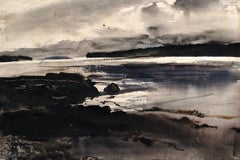
Sea Birds
View Similar Items
1 of 6
Andrew WyethSea Birds1947
1947
About the Item
- Creator:Andrew Wyeth (1917-2009, American)
- Creation Year:1947
- Dimensions:Height: 13 in (33.02 cm)Width: 19 in (48.26 cm)Depth: 1 in (2.54 cm)
- Medium:
- Movement & Style:
- Period:
- Condition:
- Gallery Location:Stonington, CT
- Reference Number:1stDibs: LU94814169351
You May Also Like
- Sagaponuck (Southampton)Located in Provincetown, MABrenda Horowitz’s continuing focus on the outer Cape landscape has allowed her to develop a deep understanding of the land, water, sky, and the relatio...Category
1980s American Impressionist Landscape Paintings
MaterialsGouache
- "Treasure Island Beach, " Gouache paintingBy Judd MercerLocated in Denver, COJudd Mercer's (US based) "Treasure Island Beach," is an original, handmade oil painting that depicts blue waves crashing on the shore of a sandy beach filled with people. About the Artist: Judd Mercer is a watercolor painter based in Denver, Colorado. After attending art school for industrial design, Judd pursued a career in digital design and user experience and is co-owner of Elevated Third, a Denver-based digital agency. After committing to writing and illustrating a full-length fantasy novel in his spare time, Judd began watercolor painting around 2014, studying with teachers such as Alvaro Castagnet, Joseph Zbukvic and Herman Pekel...Category
2010s American Impressionist Landscape Paintings
MaterialsGouache
- Canyon CountryBy Lu HaskewLocated in Loveland, COCanyon Country by Lu Haskew Pastel 16x20" image size Landscape view of the Grand Canyon ABOUT THE ARTIST: Lu Haskew 1921-2009 "Life is good to me. Being able to go to my studio five days weekly and paint for several hours, living in a supportive community, having family and friends who encourage me--all have contributed to helping me become an artist. Being fortunate to study with some of the artists I admire has kept me painting from the garden, people and my favorite things. With the support of galleries, teaching and doing demos, how could I do anything else? My goal is to try to be the best I can be by always being a student, looking for new ideas and stretching my horizons." Upon retirement from a 33-year teaching career, Lu rented a studio in Loveland and began concentrating on her oil and watercolor painting. Learning from artists she had followed and admired throughout the years her painting became a full time career. Since 1992, she has studied with renowned painters Richard Schmid, Clyde Aspevig, Joyce Pike, and others at the Scottsdale Art...Category
1990s American Impressionist Landscape Paintings
MaterialsWatercolor
- Homestead, Regional American Landscape by Pennsylvania ImpressionistBy Harry Leith-RossLocated in Doylestown, PA"Homestead" is a regional, American landscape by Pennsylvania Impressionist and New Hope School painter Harry Leith-Ross. The painting is a 14" x 19" watercolor on paper, signed "Lei...Category
1940s American Impressionist Figurative Paintings
MaterialsWatercolor, Archival Paper
- Blooming Flower Pots, Watercolor and Gouache over Pencil on White Paper, FramedLocated in Houston, TXBlooming Flower Pots is a Watercolor and Gouache over Pencil on White Paper .It is framed and ready to be shipped. One artists described Santoli's paintings as "Now that is a world class oil painting! Realistic casual brush work. The best I have seen. Delicious !! " Artist Statement: I simply love painting and my goal is to capture sunlight and color so that viewers can enjoy it as well. Eric...Category
2010s American Impressionist Still-life Paintings
MaterialsPaper, Watercolor
- "Train Station, " Max Kuehne, Industrial City Scene, American ImpressionismBy Max KuehneLocated in New York, NYMax Kuehne (1880 - 1968) Train Station, circa 1910 Watercolor on paper 8 1/4 x 10 1/4 inches Signed lower right Provenance: Private Collection, Illinois Max Kuehne was born in Halle, Germany on November 7, 1880. During his adolescence the family immigrated to America and settled in Flushing, New York. As a young man, Max was active in rowing events, bicycle racing, swimming and sailing. After experimenting with various occupations, Kuehne decided to study art, which led him to William Merritt Chase's famous school in New York; he was trained by Chase himself, then by Kenneth Hayes Miller. Chase was at the peak of his career, and his portraits were especially in demand. Kuehne would have profited from Chase's invaluable lessons in technique, as well as his inspirational personality. Miller, only four years older than Kuehne, was another of the many artists to benefit from Chase's teachings. Even though Miller still would have been under the spell of Chase upon Kuehne's arrival, he was already experimenting with an aestheticism that went beyond Chase's realism and virtuosity of the brush. Later Miller developed a style dependent upon volumetric figures that recall Italian Renaissance prototypes. Kuehne moved from Miller to Robert Henri in 1909. Rockwell Kent, who also studied under Chase, Miller, and Henri, expressed what he felt were their respective contributions: "As Chase had taught us to use our eyes, and Henri to enlist our hearts, Miller called on us to use our heads." (Rockwell Kent, It's Me O Lord: The Autobiography of Rockwell Kent. New York: Dodd, Mead and Co., 1955, p. 83). Henri prompted Kuehne to search out the unvarnished realities of urban living; a notable portion of Henri's stylistic formula was incorporated into his work. Having received such a thorough foundation in art, Kuehne spent a year in Europe's major art museums to study techniques of the old masters. His son Richard named Ernest Lawson as one of Max Kuehne's European traveling companions. In 1911 Kuehne moved to New York where he maintained a studio and painted everyday scenes around him, using the rather Manet-like, dark palette of Henri. A trip to Gloucester during the following summer engendered a brighter palette. In the words of Gallatin (1924, p. 60), during that summer Kuehne "executed some of his most successful pictures, paintings full of sunlight . . . revealing the fact that he was becoming a colorist of considerable distinction." Kuehne was away in England the year of the Armory Show (1913), where he worked on powerful, painterly seascapes on the rocky shores of Cornwall. Possibly inspired by Henri - who had discovered Madrid in 1900 then took classes there in 1906, 1908 and 1912 - Kuehne visited Spain in 1914; in all, he would spend three years there, maintaining a studio in Granada. He developed his own impressionism and a greater simplicity while in Spain, under the influence of the brilliant Mediterranean light. George Bellows convinced Kuehne to spend the summer of 1919 in Rockport, Maine (near Camden). The influence of Bellows was more than casual; he would have intensified Kuehne's commitment to paint life "in the raw" around him. After another brief trip to Spain in 1920, Kuehne went to the other Rockport (Cape Ann, Massachusetts) where he was accepted as a member of the vigorous art colony, spearheaded by Aldro T. Hibbard. Rockport's picturesque ambiance fulfilled the needs of an artist-sailor: as a writer in the Gloucester Daily Times explained, "Max Kuehne came to Rockport to paint, but he stayed to sail." The 1920s was a boom decade for Cape Ann, as it was for the rest of the nation. Kuehne's studio in Rockport was formerly occupied by Jonas Lie. Kuehne spent the summer of 1923 in Paris, where in July, André Breton started a brawl as the curtain went up on a play by his rival Tristan Tzara; the event signified the demise of the Dada movement. Kuehne could not relate to this avant-garde art but was apparently influenced by more traditional painters — the Fauves, Nabis, and painters such as Bonnard. Gallatin perceived a looser handling and more brilliant color in the pictures Kuehne brought back to the States in the fall. In 1926, Kuehne won the First Honorable Mention at the Carnegie Institute, and he re-exhibited there, for example, in 1937 (Before the Wind). Besides painting, Kuehne did sculpture, decorative screens, and furniture work with carved and gilded molding. In addition, he designed and carved his own frames, and John Taylor Adams encouraged Kuehne to execute etchings. Through his talents in all these media he was able to survive the Depression, and during the 1940s and 1950s these activities almost eclipsed his easel painting. In later years, Kuehne's landscapes and still-lifes show the influence of Cézanne and Bonnard, and his style changed radically. Max Kuehne died in 1968. He exhibited his work at the National Academy of Design, the Art Institute of Chicago, the Carnegie Institute in Pittsburgh, the Memorial Art Gallery of the University of Rochester, and in various New York City galleries. Kuehne's works are in the following public collections: the Detroit Institute of Arts (Marine Headland), the Whitney Museum (Diamond Hill...Category
1910s American Impressionist Landscape Drawings and Watercolors
MaterialsPaper, Watercolor
Recently Viewed
View AllMore Ways To Browse
Hot Summer
Sculptural Gold Leaf
Suffolk Painting
Portrait Of An Indian
Charles Parks
Seine Oil Painting
Set Of Four Landscape
Small Oil Painting Children
1954 Landscape Oil Painting
Large Oil Paintings Gardens
Railroad Art
Impressionist Waves
Tree Sketch
French Impressionist Landscapes 19th Century
Unsigned Landscape Painting In Oil
Sun Reflections
Vintage Clouds Painting
Port Piece
